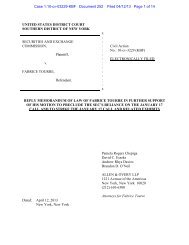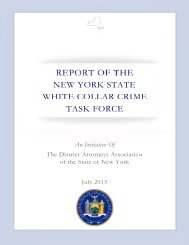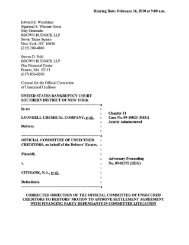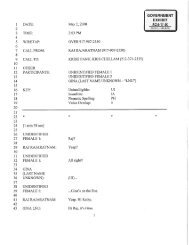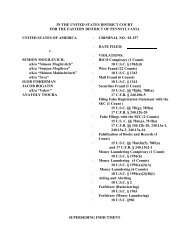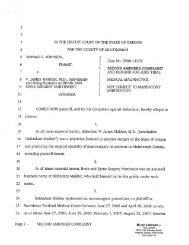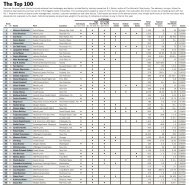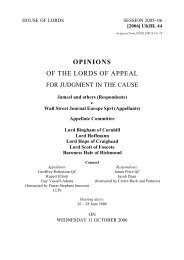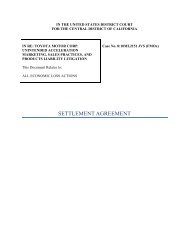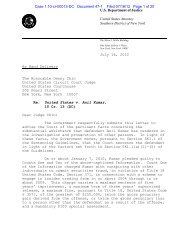Salz Review - Wall Street Journal
Salz Review - Wall Street Journal
Salz Review - Wall Street Journal
Create successful ePaper yourself
Turn your PDF publications into a flip-book with our unique Google optimized e-Paper software.
<strong>Salz</strong> <strong>Review</strong><br />
An Independent <strong>Review</strong> of Barclays’ Business Practices<br />
112<br />
9.57 Some boards treat succession planning, including the development of potential<br />
leaders, more systematically than was apparent in the two Barclays cases we looked<br />
at. For example, they will see reports on a significant number of senior managers and<br />
devote more time to a discussion of a number of managers with top-level potential.<br />
“Assessment reports are like finance reports, providing granularity about<br />
performance, what has been achieved and how. Information can be gleaned about<br />
personality preferences (likes to do), ability (can do), behaviour (how it is done),<br />
motivation (will do) and red flags (de-railers).” 184<br />
Recommendation 11: Group Chief Executive succession<br />
The Board should agree periodically the criteria and personal characteristics<br />
required for the role of Group Chief Executive as part of its succession<br />
planning. The framework for succession planning should include the long-term<br />
development of future leaders, Board exposure to potential internal candidates,<br />
thorough consideration of external candidates and assessment of alignment<br />
with Barclays’ culture and values.<br />
Operation of Subsidiary Boards<br />
9.58 We have considered formalising non-executive participation (drawn from existing<br />
Barclays’ non-executive directors or others) on some subsidiary boards or on key<br />
governance, risk and audit committees covering geographies or businesses.<br />
Historically, many banks have done this only where laws or regulators require it and<br />
the corporate structure makes it appropriate. From a governance viewpoint, there are<br />
advantages and disadvantages in such an approach, as well as legal considerations<br />
around the responsibilities of directors. Significant advantages of adding nonexecutives<br />
who are not on the Group Board to a subsidiary board (such as one<br />
designed to cover the investment bank) would be to share some of the workload and<br />
to give a more specific non-executive focus to a complex part of the Group.<br />
The assumption would be that the workload at Group level would be reduced by a<br />
degree of reliance on the subsidiary level oversight. If the structure achieved better<br />
understanding of a complex area, improved oversight would be achieved overall.<br />
On the other hand, it may be difficult for Group non-executives, having regard to<br />
their own responsibilities, not to duplicate much of the work done at subsidiary<br />
board level especially if, as would be likely, the subsidiary represented an important<br />
part of the business and there was a risk of issues falling between the two. And issues<br />
such as culture, standards and values are Group issues that require an understanding<br />
of the behaviours across the whole Group. For example, the Barclays Wealth<br />
business is a relatively small part of the Group taken as a whole but is nevertheless<br />
significant to Barclays’ reputation. And there would need to be occasions when all<br />
the non-executives met together – not least to assure some consistency of approach.<br />
At present where such boards and board committees exist at subsidiary level, for<br />
example in South Africa, there is insufficient linkage with Barclays Board nonexecutives,<br />
although there are arrangements for issues to be raised to Group level<br />
through management reporting lines.<br />
184 Sir David Walker, A <strong>Review</strong> of Corporate Governance in UK Banks, p. 141.




